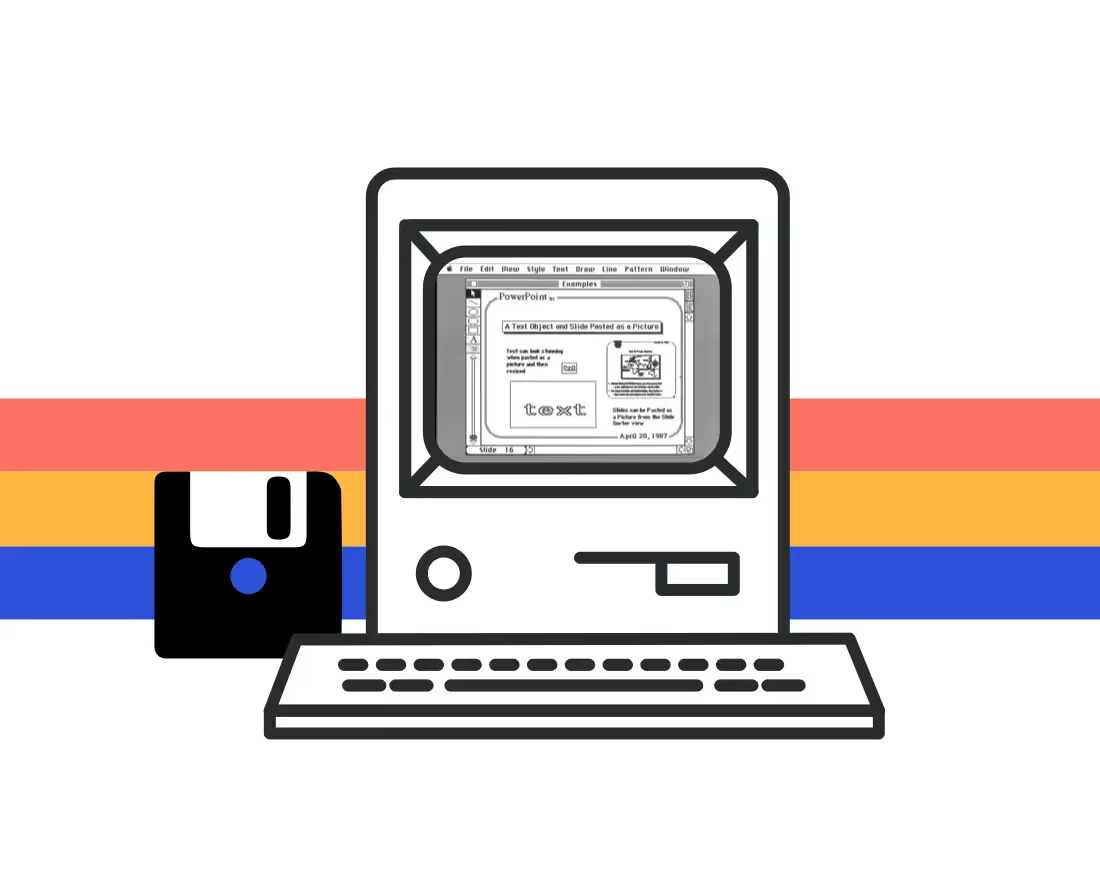
Whether you’re dealing with internal or external clients and customers, retention is key to building a business. How can you succeed if you can’t keep quality employees and repeat customers?
Plus, it costs so much more to recruit new customers and train new employees— employers can spend between half and double a worker’s salary on hiring a replacement, and replacing a customer can ultimately cost a business between 5 and 25 times more than repeat clientele. Therefore, successful retention efforts boost profits and deliver a huge return on investment.
According to Gallup, companies lose $1 trillion on voluntary turnover each year, it’s no wonder they focus on retention efforts. What many ultimately learn is that positive retention efforts start from their earliest interactions, including a stellar onboarding presentation.
Onboarding describes the process of introducing new employees or customers to a product, a business or another organization. It’s an important element of the hiring and marketing processes because it integrates them within a company’s culture, which can instill early loyalty to a still unfamiliar brand.
Onboarding is more than orientation and an introductory presentation. It can involve multiple processes ranging from an initial offer or sale to salary and price negotiations, training, contracts and forms, tours and social introductions, as well as a variety of informative presentations.
"With the new focus on remote first, it's time for companies to rethink their onboarding strategies, with a focus on engaging, asynchronous communication so new hires can get the information they need efficiently—without wasting hours on boring video calls," said Tracy Cote, Chief People Officer at Zenefits.
While there’s no specific formula for a successful onboarding program or presentation, there are processes and best practices to consider.
Onboarding New Employees
Onboarding is key to effective employee retention. It not only trains new hires and acquaints them with the company, but it shows them they are valued from the very start of their company experiences. Successful onboarding programs help newly-hired employees feel part of the team from their first days, and that loyalty results in longer tenures and even 54 percent greater productivity.
What is the onboarding process for new employees? Successful employee onboarding involves so much more than benefits, paperwork and training. To make new employees feel at home, it’s important to introduce them to those with whom they’ll be working, as well as other key players in the company. Show them the break rooms, prepare their workstations, offer tips and secrets for making their work life simpler, and let them know they are valued by explaining exactly how to make the best use of vacation and personal time.
If there are other perks and benefits of working for the company, be sure they know all about those, too. Later, be sure to consistently follow up with new employees to address any new questions or concerns and reassert their value to the company.
No matter what activities you include in your onboarding program, just remember: Onboarding is a process, not a single event.
Onboarding New Clients and Customers
While onboarding is most closely associated with newly hired employees, it’s also an important part of welcoming and retaining new customers.
What is customer onboarding, and what is client onboarding? Each closely relates to value. Price might be an important part of attracting new customers, but as it turns out, it’s not all that important to keeping them.
In fact, the No. 1 reason customers churn away from a company or product is poor customer service. They did not receive the help they needed to use the product, they felt ignored or they just felt they weren’t treated well.
An effective customer onboarding experience can ensure they are familiar with and getting the greatest benefit from the product or service they purchased, and it can show the customer they are valued from their earliest experiences with the company.
The second most prevalent reason for customer churn, according to Research Science, is a lack of value. It’s not about the price, but instead whether the customer felt their purchase was worthwhile. Did it meet or exceed their expectations, and was their experience with the product or service smooth and successful?
Customer onboarding can ensure customers’ expectations are met, and they find value in their purchase. Onboarding programs can also build value by offering new customers perks like free shipping, a welcome discount or a loyalty program.
Onboarding Process
There are a variety of reasons why onboarding matters, and there are even more different ways onboarding can occur. No matter how you decide to conduct your onboarding presentation and program, be sure it’s a process, not an event.
Because onboarding is a process, it takes more than a single employee orientation event, although that should be a part of the onboarding program. A positive employee orientation welcomes new hires, introduces them to the company, their role and their benefits, as well as provides guidance in filling out various forms, but onboarding doesn’t end there.
Onboarding focuses on more than the employee’s specific job, it helps the newly hired to feel integrated into a team. It can be individualized as the new employee becomes known, and the process can take days, weeks or months.
Like employee onboarding, customer onboarding involves a process of making the client feel welcomed and valued, while ensuring they feel valued and find value from their purchase. The process can involve detailed tutorials, guides and additional support to ensure customers get the most from their purchase, and it can also include milestone celebrations and other events to inspire loyalty to a product or brand.
Onboarding Best Practices
While there’s no specific recipe for the successful onboarding of internal and external clients, there certainly are tips and best practices to achieve an effective onboarding process, including:
- Create a checklist to ensure you don’t omit important tasks, and the process runs smoothly and consistently.
- Set goals and expectations so your new hires and new customers know what’s coming, and they can follow along more easily.
- Share the company’s culture and value with new hires and new customers. Describe a brand experience that invokes excitement and instills loyalty.
- Ask plenty of questions to show the employees and customers that they matter and offer plenty of opportunities to answer any questions they might have.
- Share tools and training to ensure employees and customers alike have all the knowledge and skill needed to do their job or enjoy their purchase. Ask questions to learn about the new hire or customer’s existing skill level. Then you can provide the proper level of training and instruction based on their existing skill and understanding. Product demonstrations are also extremely effective when onboarding customers.
- Introduce the team that the employee will be working with or the team that will be assisting a customer. Also, introduce them to other principals in the company. Ice breakers are a great way to help new hires feel they belong.
Onboarding with Presentations
Whether you work in human resources, you’re involved in marketing or you are running your own small business, visual presentations are an effective element of the employee or customer onboarding process. Humans are after all extremely visual creatures— half of our brains are devoted to visual processing.
What better way to provide a slew of new information and describe complex processes than by illustrating it all? Likewise, remote employees are better able to understand and follow along when the information is presented visually. Plus, shared slide decks can be referenced later for further understanding and memory retention.
Because onboarding is a process, you might be unsure of exactly what slides to include in your visual presentation and how to make the deck exciting and interactive. After all, the last thing you want to use to impress new internal and external clients is a stale and tired frankendeck.
Fortunately, Beautiful.ai offers users a plethora of smart slide templates that easily can be customized to present any sort of information and data. Whether it’s a text-based slide, animated graphics or a detailed infographic, the smart slides will automatically adjust as content is added, taking into account principles of good design relied upon by the pros.
Beautiful.ai users don’t even have to know the best slides and format to present their onboarding program. Our New Hire Onboarding presentation template was curated by our designers to feature the perfect slides for your onboarding presentation. Our PowerPoint-alternative presentation software will then adjust the slides based on design principles any time you add new text, graphics and numerical data.
Our onboarding presentation template features slides that introduce new hires to the company while they promote a smooth onboarding process and encourage open communication. We also offer presentation templates for onboarding new clients. If any of our pre-selected slides don’t fit your onboarding narrative, that’s OK, too. All of Beautiful.ai’s presentation templates are completely customizable.







.gif)
